
Photo © Paul Rivera Courtesy of Rojkind Arquitectos
Flexibility, fluidity, and dynamism drove the design process of the façade of the Liverpool Interlomas department store. Its sleek stainless steel machine-like exterior transforms into a dynamic form accented by light at night.
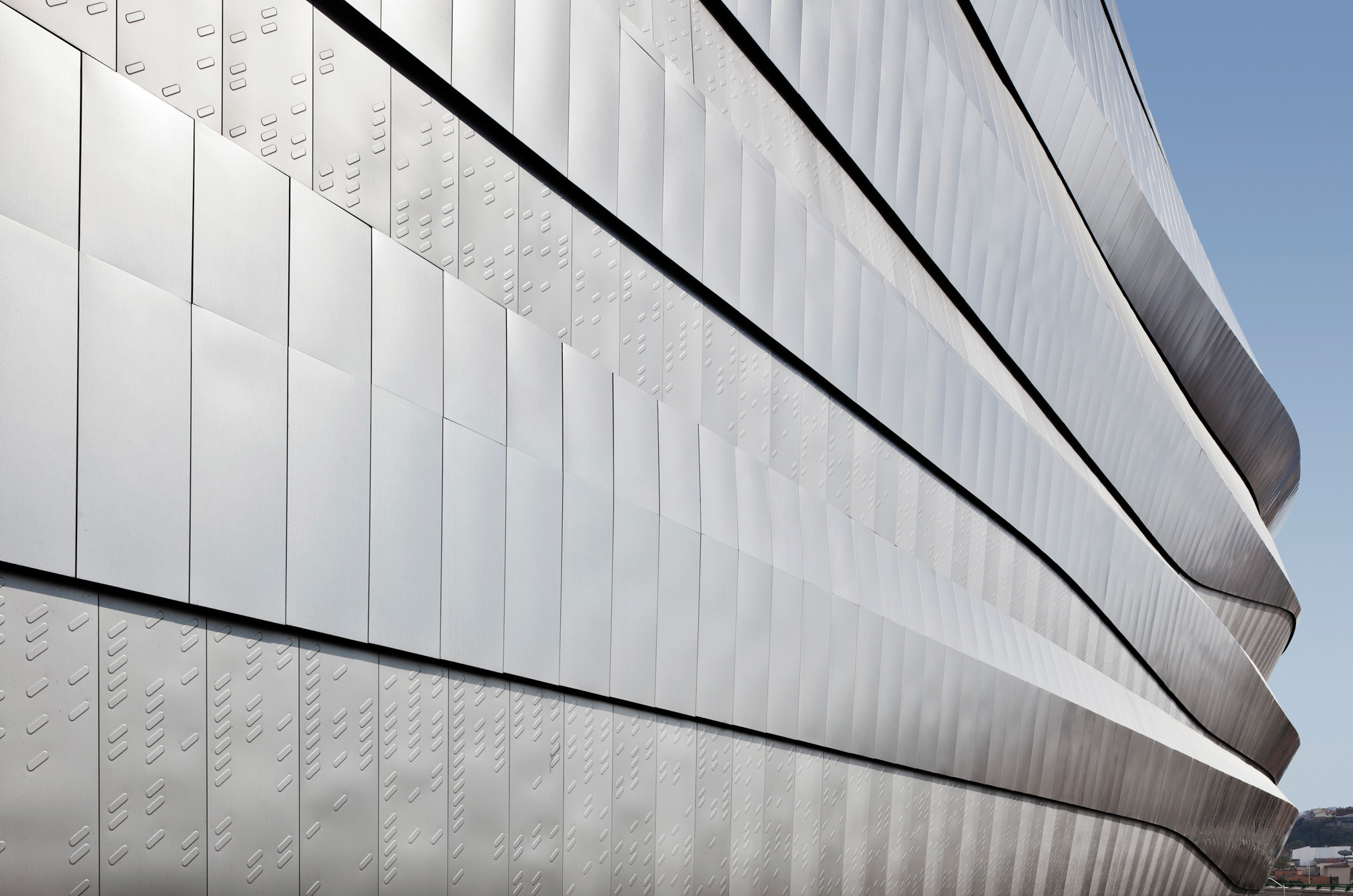
Photo © Paul Rivera Courtesy of Rojkind Arquitectos
Joe R. Tarr (Project Manager)
Rodrigo Medina (Computational Design)
Philipp Schlauch (Computational Design)
Andrea León (Office Manager)
Isaac Smeke
Djurdja Milutinovic
Abhirabika Agrawal
Birgit Hammer
Jose Carlos Lombana
Dolores Martínez Robles
Rosalba Rojas
Beatriz Zavala
Monique Rojkind (Marketing)
Interior Design
FRCH Design Worldwide + JHP
Structural Engineer
EMR SA
Façade Engineer
Studio NYL
Façade Fabrication
Zahner Metals
Computational Design Consultant
Kokkugia
Landscape Consultant
Thomas Balsley Associates
Renders & Video
Glessner Group
Rojkind Arquitectos
Photography
Jaime Navarro
Paul Rivera
Understanding the new role shopping centers play in today’s society, in which they have become a magnet for social and cultural encounters, Rojkind Arquitectos was commissioned to design a façade for the new 18,000 square meter department store as part of a new era in the company’s pursuit to re-brand itself. Liverpool department stores, with a 164-year-old history, have for the most part always been one of the main anchor stores for large shopping centers in Mexico. Its strategic location plays an important role in the immediate urban context.
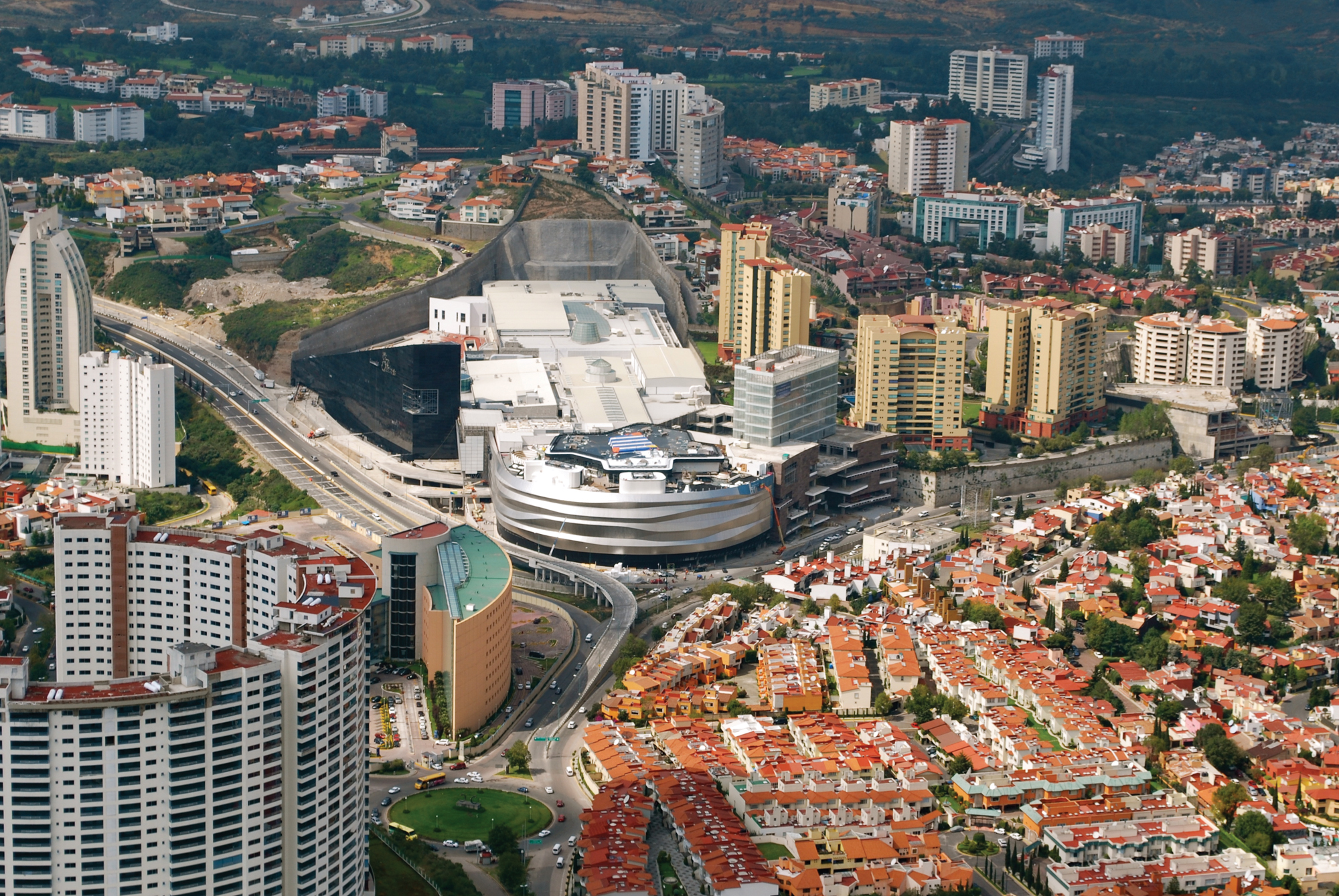
Photo © Rojkind Arquitectos
Located in the northern car-dependent suburb of Interlomas on the outskirts of Mexico City, this relatively new suburb is characterized by a lack of open public space and a myriad of roads on which pedestrians are not welcomed.
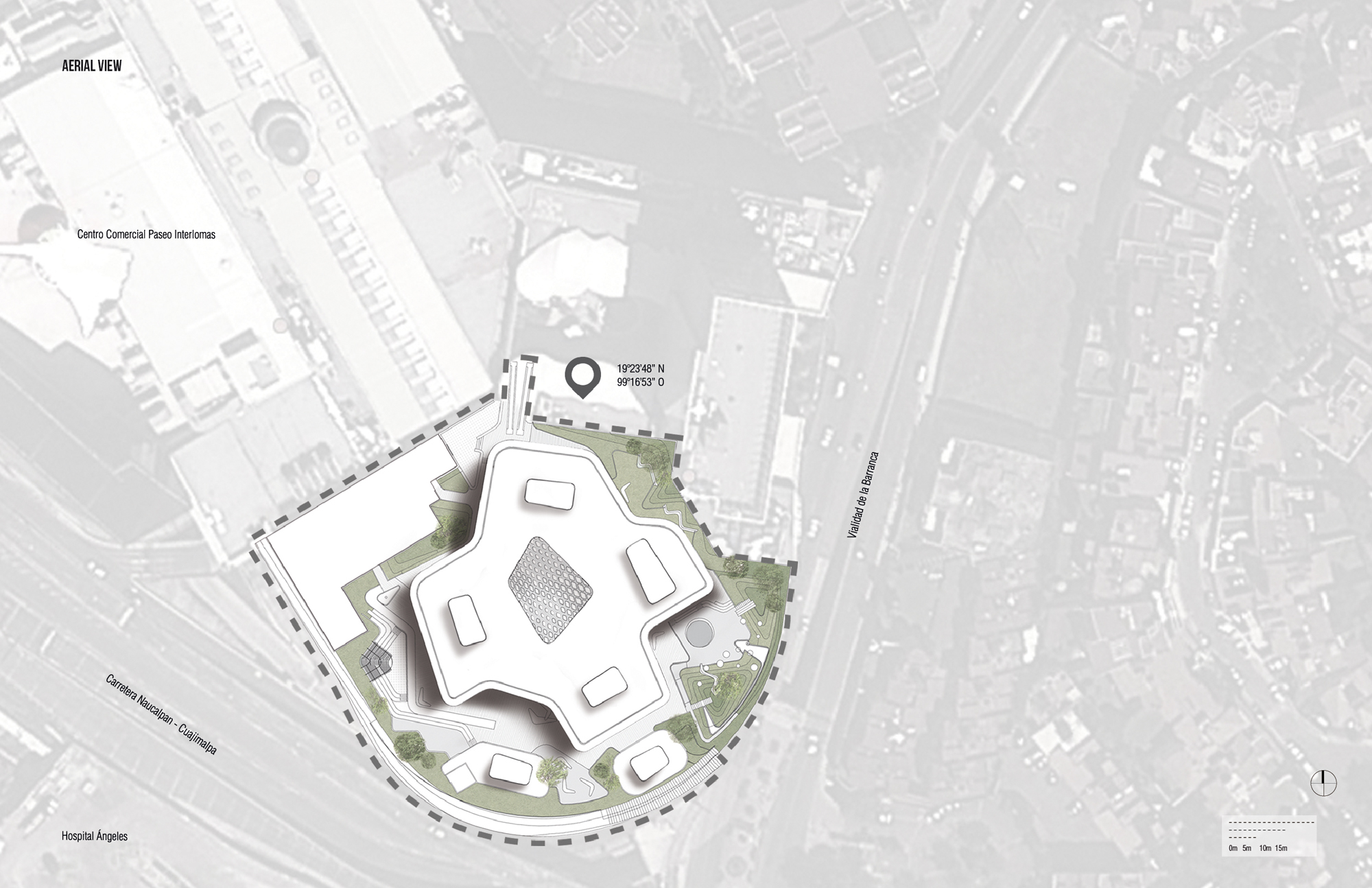
Site plan © Rojkind Arquitectos
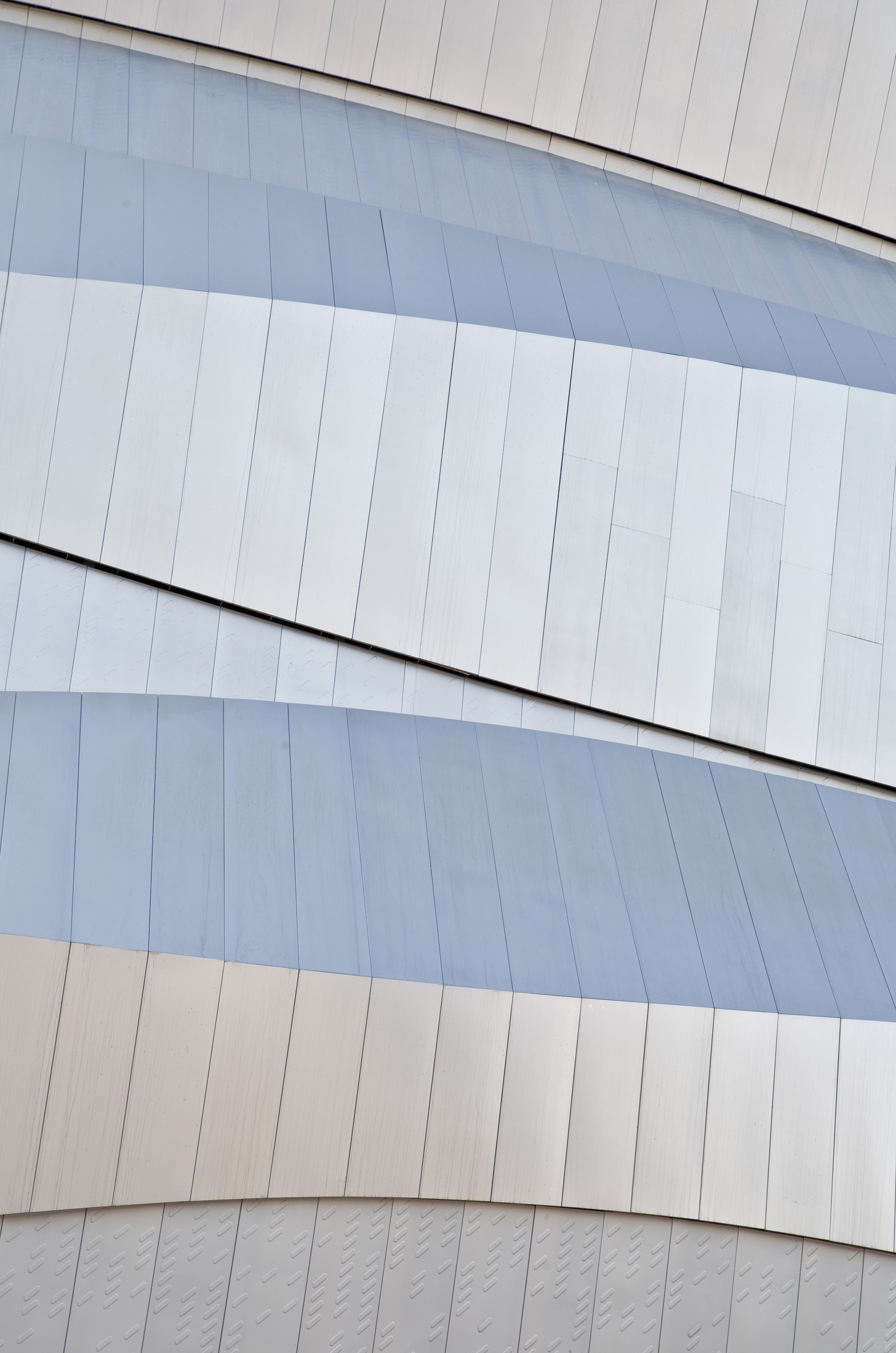
Photo © Paul Rivera Courtesy of Rojkind Arquitectos
The new facade responds to the fast pace of everyday life in this isolated suburb, sitting in the middle of a very congested intersection of highways and overpasses, which give it a futuristic “Blade Runner-like” feel.
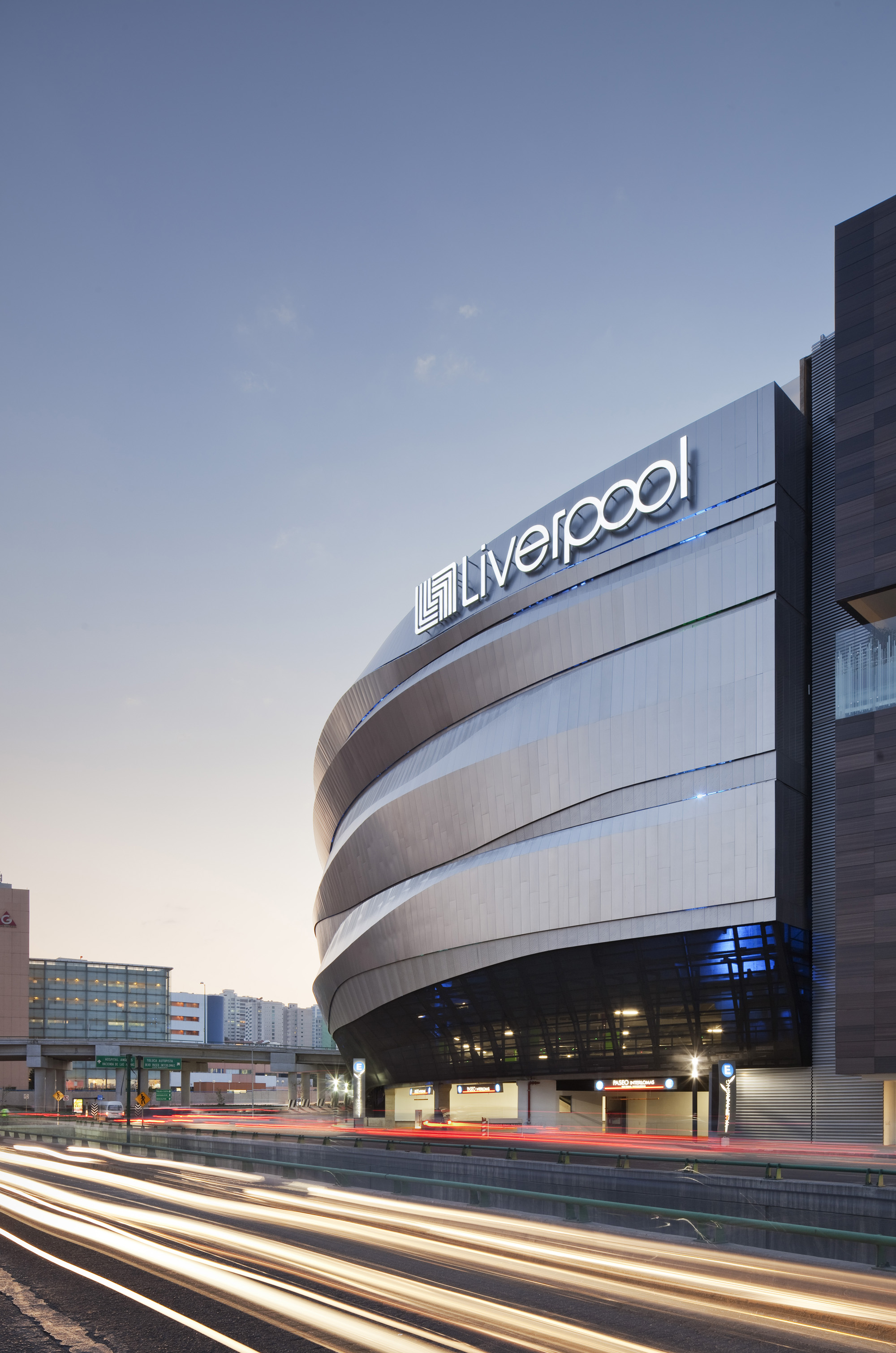
Photo © Paul Rivera Courtesy of Rojkind Arquitectos
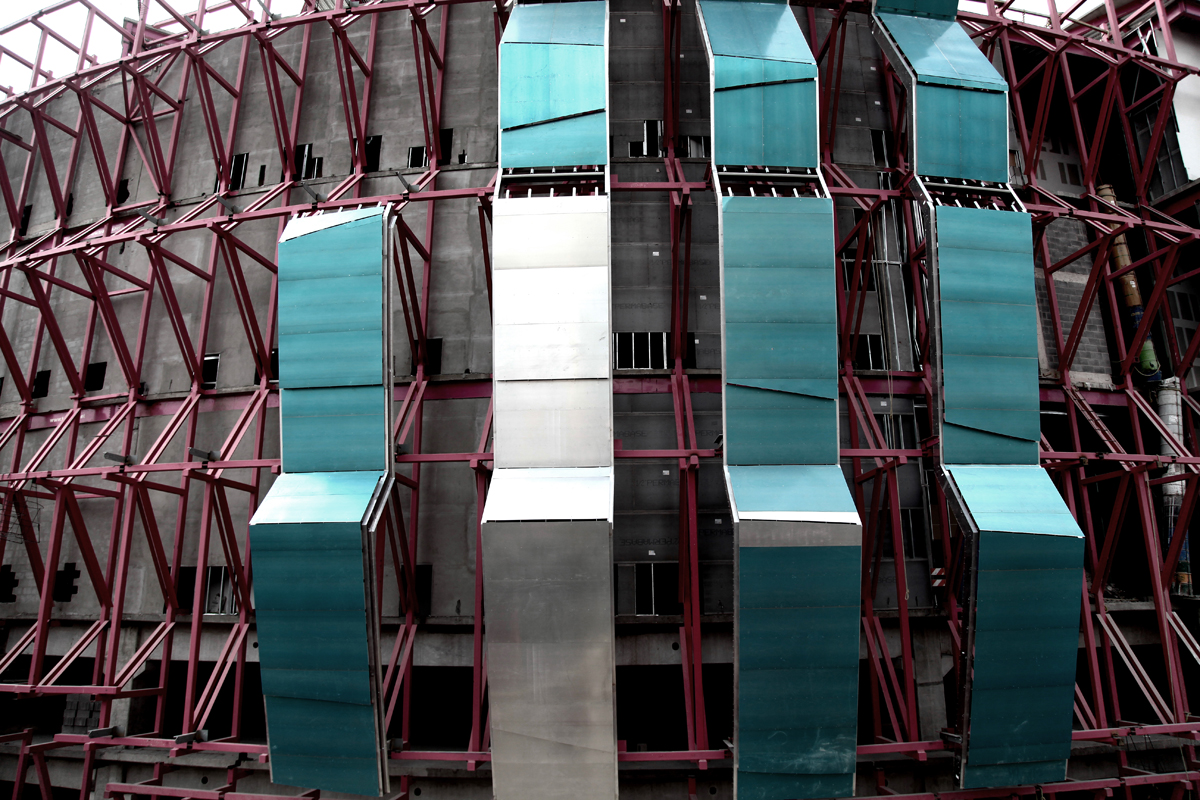
Façade installation © Rojkind Arquitectos
With an existing circular footprint, the customization process of fabricating directly from 3D models drove the ideas behind the façade design intent. Speed became a very important factor in the way the project is experienced. Flexibility, fluidity, and dynamism drove the design process.
The double-layered façade shelters the store and its users from its chaotic environment. Its sleek stainless steel machine-like exterior is intended to evolve in a very fluid way as the intense sun bathes it throughout the day. It’s a contradiction to the grit and chaos of its surroundings; a juxtaposition that becomes a new reference for this part of the city.
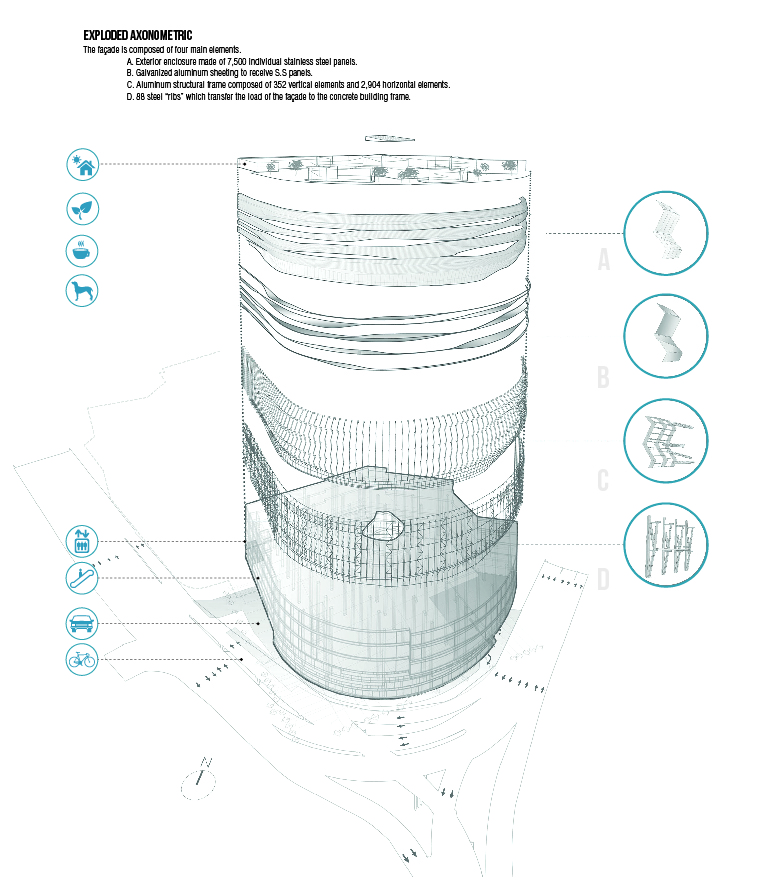
Exploded diagram © Rojkind Arquitectos
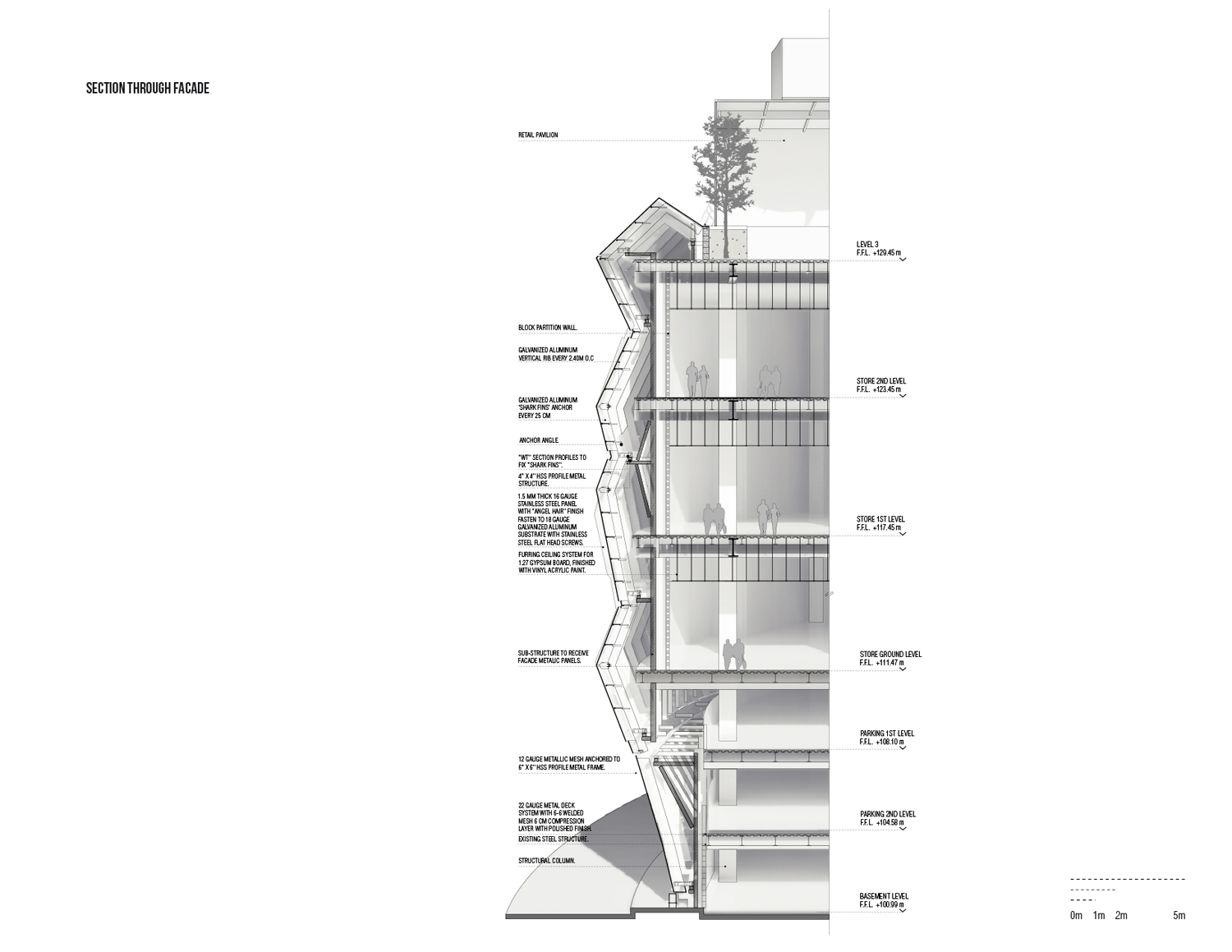
Section © Rojkind Arquitectos
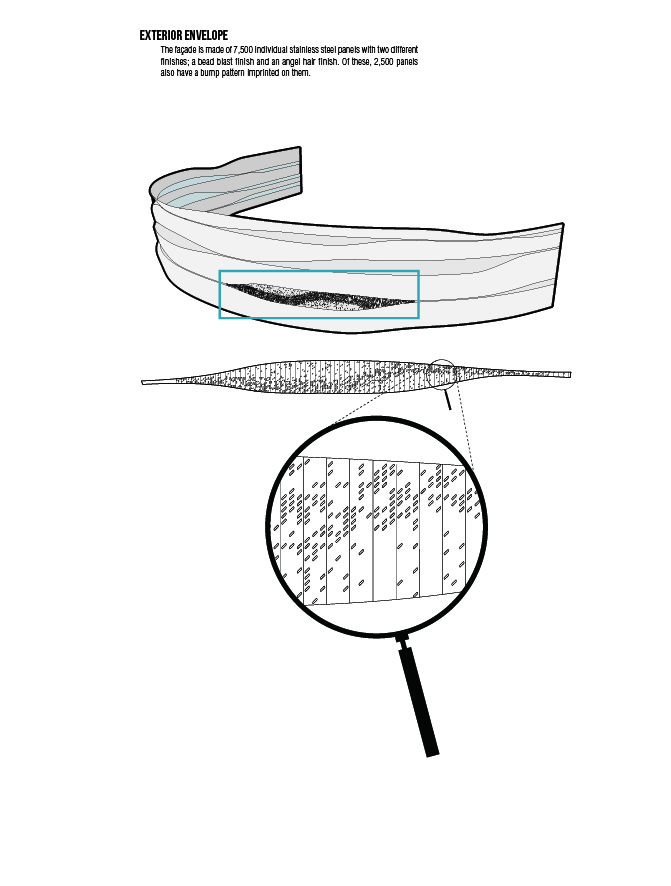
Diagram exterior envelope © Rojkind Arquitectos
At night, the hollow cavity between the layers of the façade is engulfed in light that subtly escapes through the fine reliefs formed at the folds in the skin. The façade transforms at night from its solid monochromatic appearance during the day to a dynamic form accented by light.
As part of this new endeavor by the client, multiple design firms were selected to participate in the various parts of the project: the interiors were done by FRCH, the rooftop garden by Thomas Balsley, and the gourmet space by JHP.
In the initial workshop sessions, it became clear that the main central interior space needed to reflect the dynamic nature of the exterior so the client retained Rojkind Arquitectos to design this space as well.
As the visitors enter, they are met by a three-story atrium full of movement and filtered daylight that encourages the visitors to move throughout the department store.
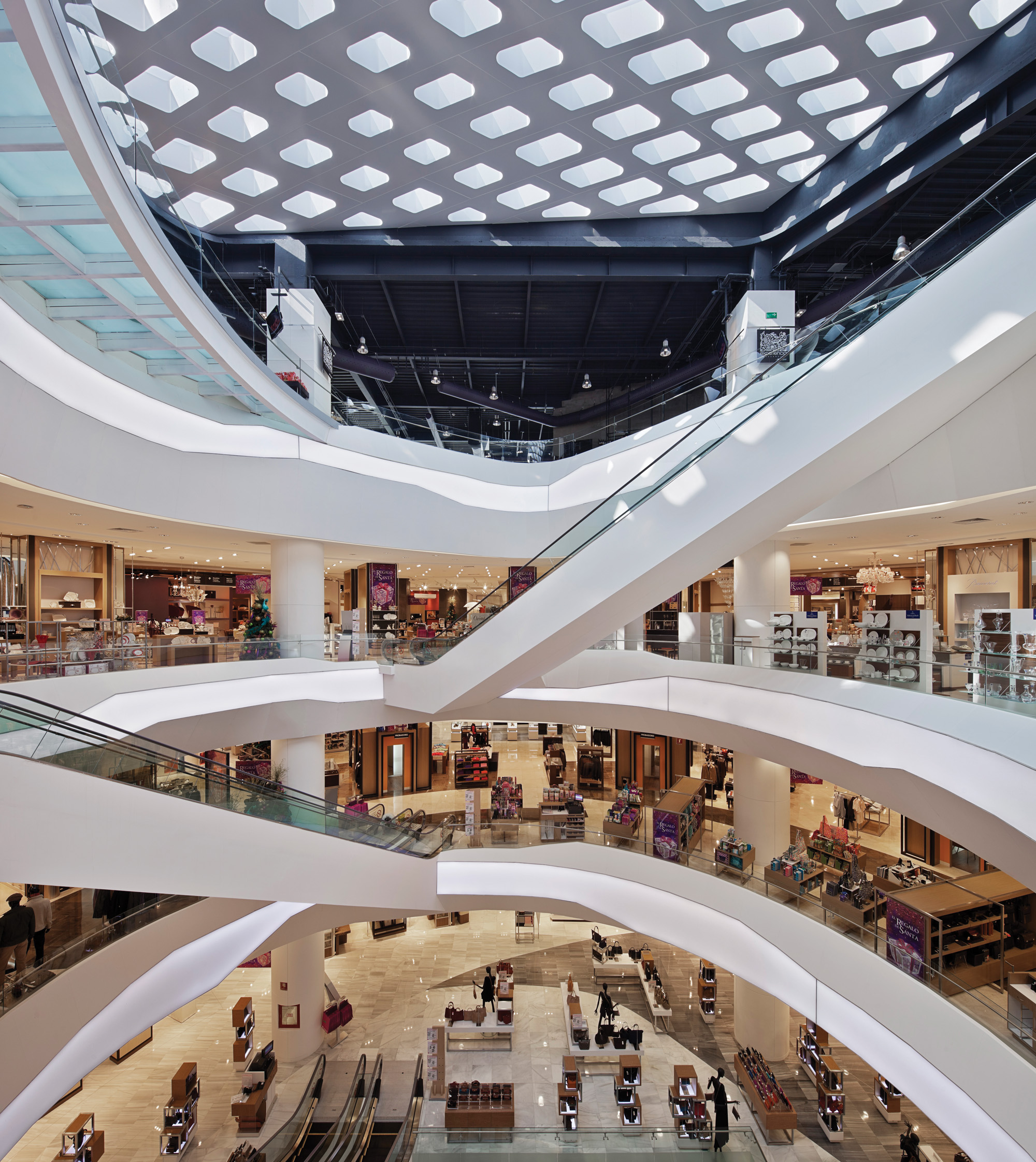
Photo © Paul Rivera Courtesy of Rojkind Arquitectos
The curved backlit balconies are intended to be a reminder of the fluidity of the exterior façade but at a more human scale as opposed to the urban scale of the exterior façade. This play between the inside and outside is intended to create a sense of discovery for the user that culminates at the roof garden.
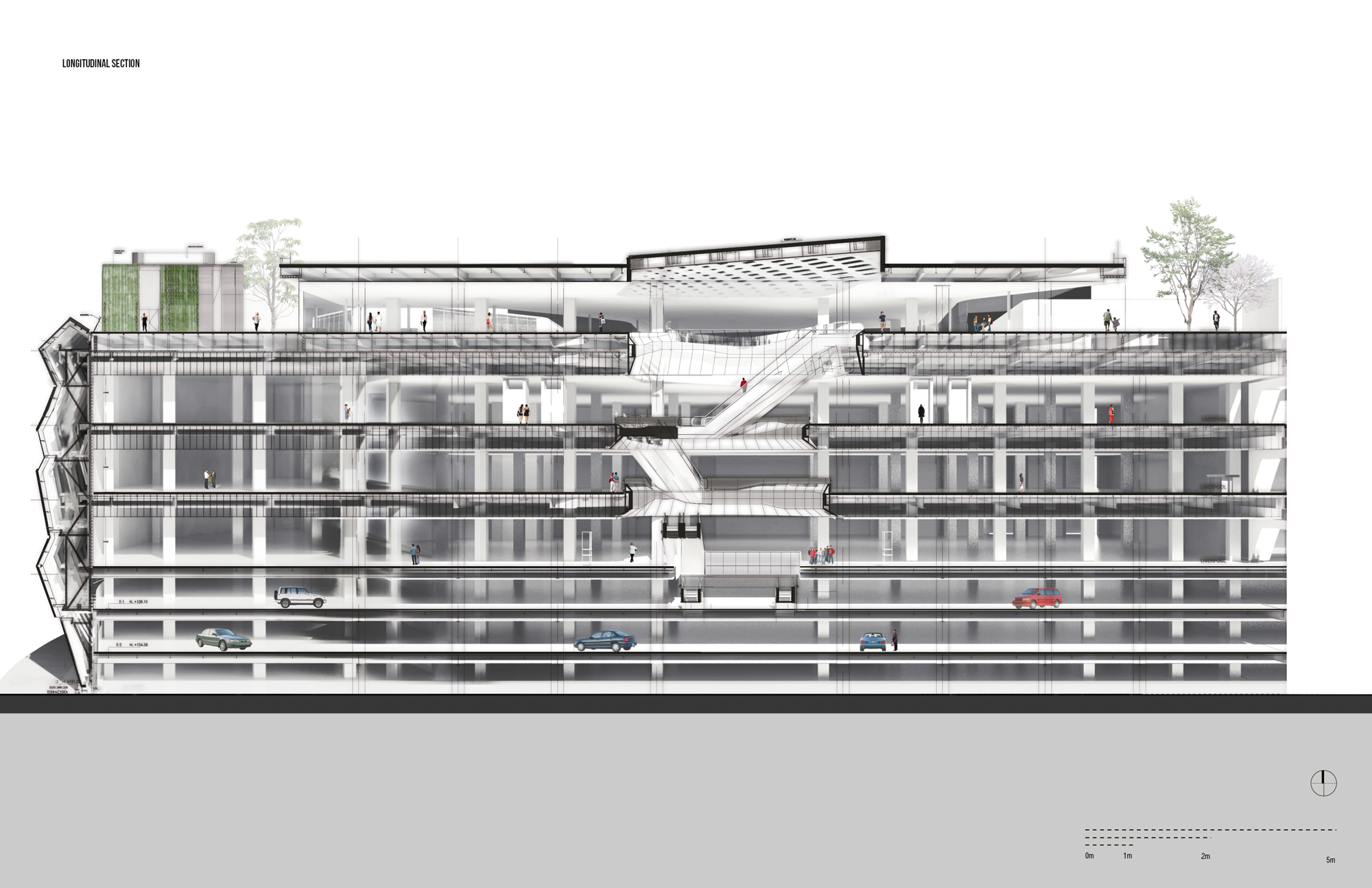
Longitudinal section © Rojkind Arquitectos

Detail atrium © Rojkind Arquitectos
The roof terrace contains a park-like setting that can be enjoyed not only by the store visitors but also by the surrounding local community, thus enhancing the social role that the department store will play.
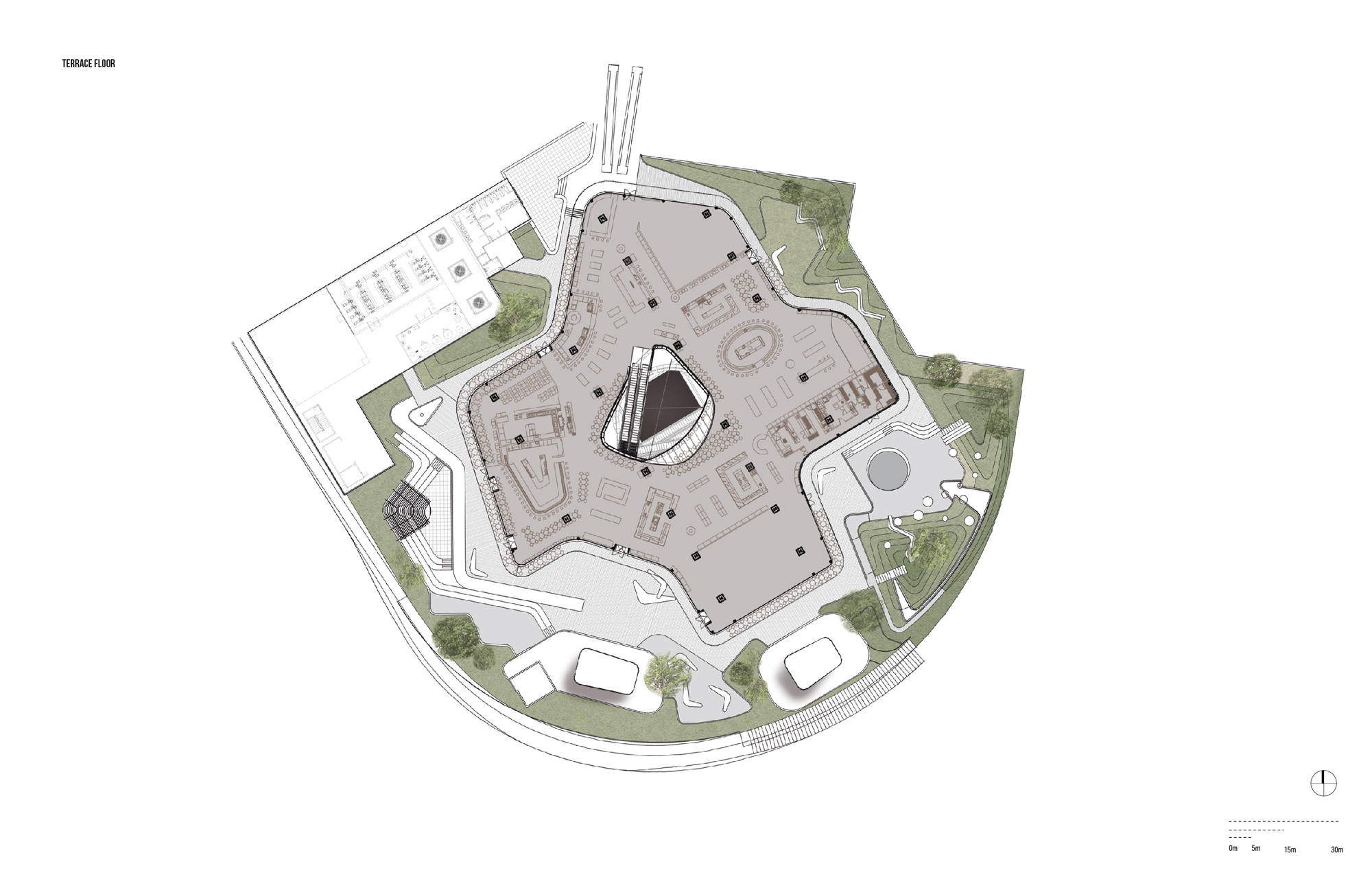
Roof plan © Rojkind Arquitectos
The complexity of the project combined with a very tight schedule and a difficult urban site condition, required the combination of a highly skilled design team and collaborators in which the interconnectivity and digital design tools have radically transformed the way we design and construct buildings today.
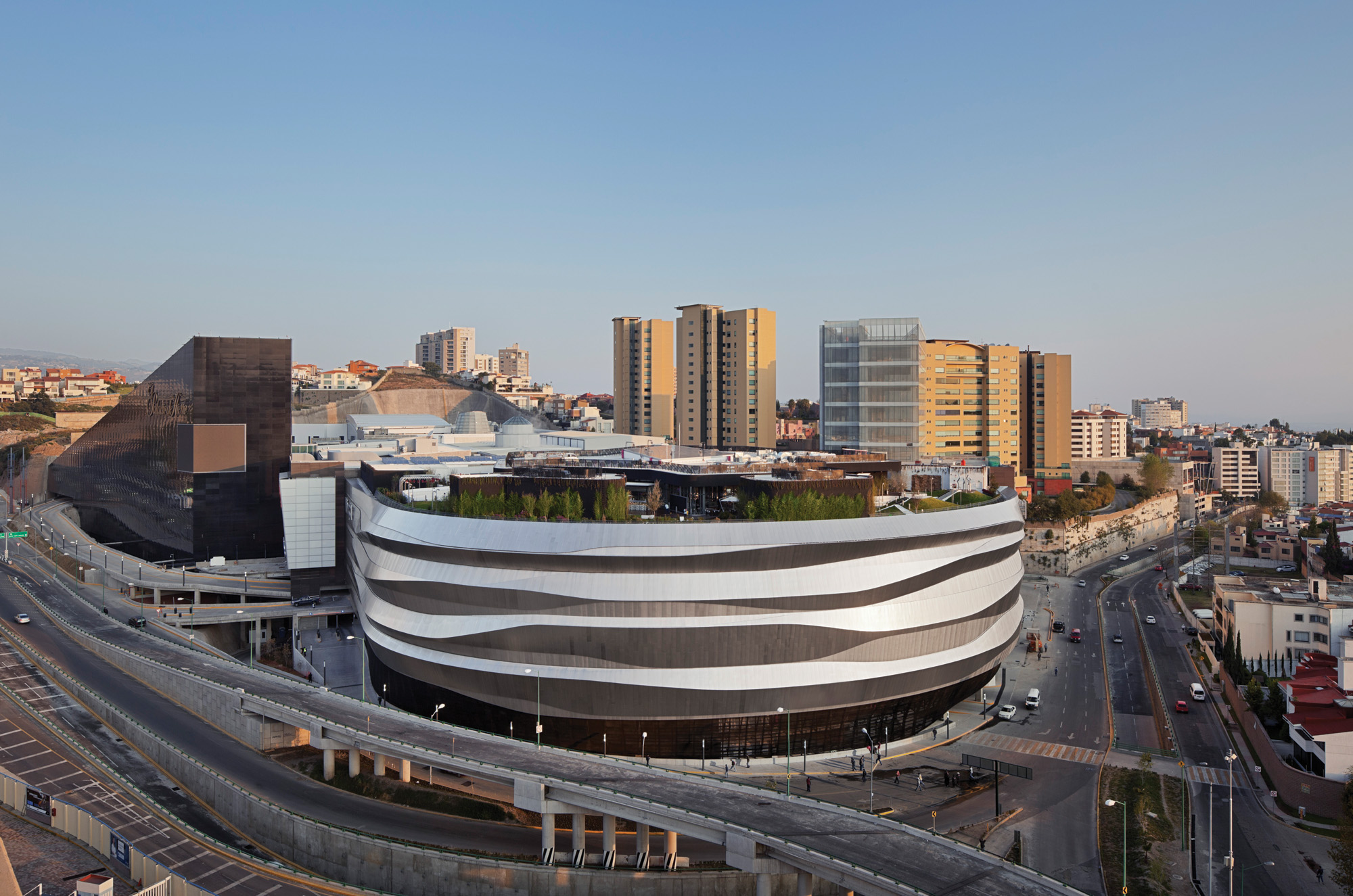
Photo © Paul Rivera Courtesy of Rojkind Arquitectos

rojkindarquitectos

rojkindarquitectos

rojkindarquitectos

rojkindarquitectos

rojkindarquitectos

rojkindarquitectos